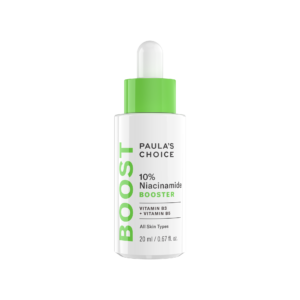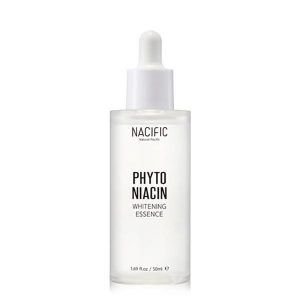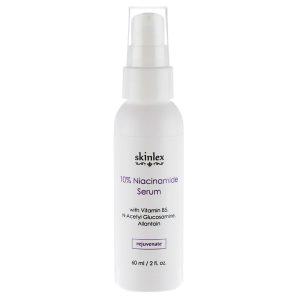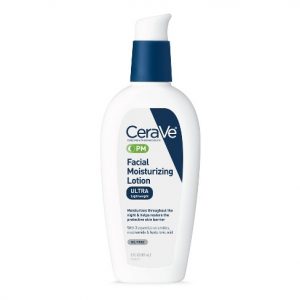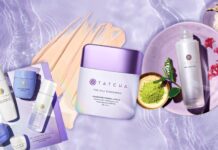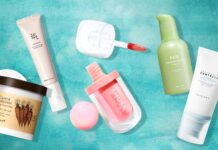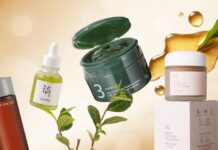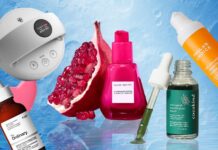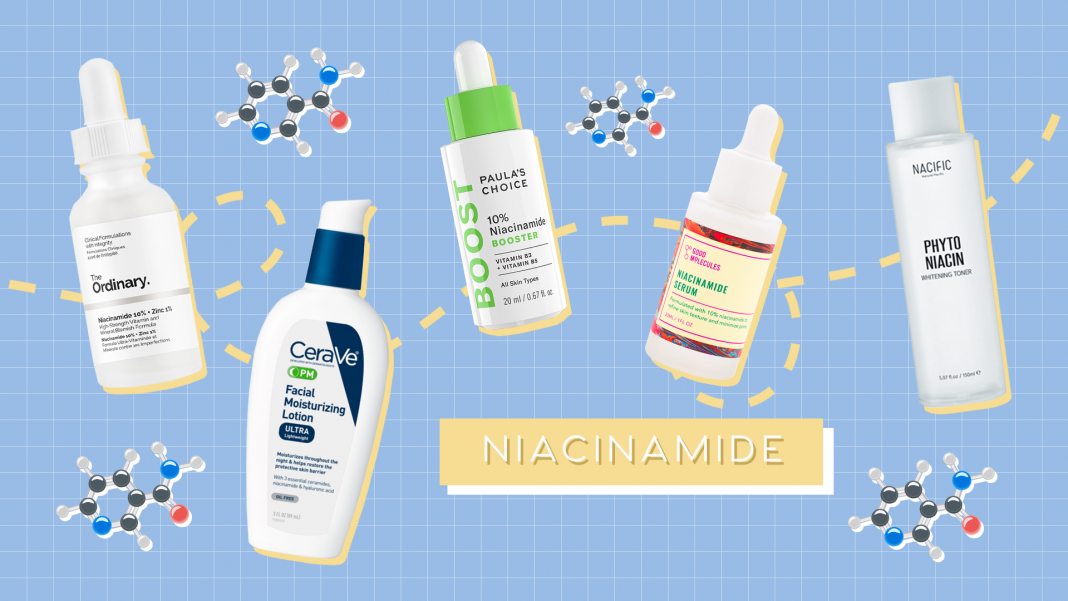
In the skincare world, Niacinamide is a friend that everyone want. It get along with everyone else and work well together; they boost and lift you up to be the very best you can be! We’ll talk about how to use niacinamide and give you our product recommendations at the bottom of this article.
This is our part two of our ABC’s of skincare. If you haven’t already, make sure you also check out our article on Vitamin A (Retinoids).
What is Vitamin B3?
It is one of the most popular go-to active skincare ingredients. According to dermatologists and researchers, it is proven to work effectively on all skin types. It is a form of vitamin B3, and can show up as “Niacin,” “Niacinamide,” and “Nicotinamide” in your skincare products.
Vitamin B3 is present in food as Niacin, which helps to convert carbohydrates into energy for our body. Some of the foods that include are: chicken, fish, liver, mushrooms, eggs, beets, and green vegetables. It’s also worth mentioning that when you take Vitamin B3 supplements, you’re most likely ingesting Niacin. But in skincare products, vitamin B3 shows as Niacinamide and Nicotinamide.
Let’s talk about Niacinamide
It is a water soluble vitamin, which means it won’t dissolve in oil. So you’re likely to find them in water based serums, moisturizers, and also in face masks. Niacinamide is also one of the most stable vitamins, with a pH level of 7 which indicates that this ingredient is non-irritating, non-acidic, and works well with all skin types.
How does this work for our skin?
The short answer is that Niacinamide works to improve your acid mantle, which is just a fancy term for the outermost layer of the skin. This acid mantle is made up of your skin’s natural oils, ceramides, and proteins, and help keep the skin moisturized. Since vitamin B3 is easily absorbed in the acid mantle, it’s a great ingredient for keeping your acid mantle healthy without irritating the skin.
But that’s not all of what Niacinamide does!
It also helps to improve skin barrier function, decrease skin hyperpigmentation, reduces fine lines and wrinkles, decreases redness and blotchiness, and improves skin elasticity. Overall, this ingredient is great to have in your skincare routine since it can bring many benefits to the skin. Huzzah!
How to Use Niacinamide
Great news is that Niacinamide has little to side effects and can be used at high percentages… all while being well-tolerated by the skin. Not to mention that it’s a stable ingredient that works well with other ingredients! Additionally, it is found in 2, 5, or 10% concentrations, but it’s also possible to not find any amounts disclosed depending on the skincare brand.
Another tip to keep in mind is that if you experience any irritation from using niacinamide products, it’s most likely coming from another ingredient in the product’s formula. If you have sensitive skin and are interested in trying this out, we highly suggest that you find a product that only contains niacinamide.
Tips & Suggestions
After cleansing your face, apply your toners and serums or chemical exfoliants to the skin. At this stage, take the time to allow the skincare products to sink in. Afterwards, you can apply your niacinamide and finish off with a moisturizer.
But that’s not to say that you should strictly follow this step. Since everyone’s skin is different, you can adjust when you want to use niacinamide in your routine accordingly. If the vitamin is in liquid form, you can apply it after toning. Alternatively you can apply it after your serum or along with your moisturizer.
Product Recommendations
Check out the full video:
Head over to more information and product recommendations:

